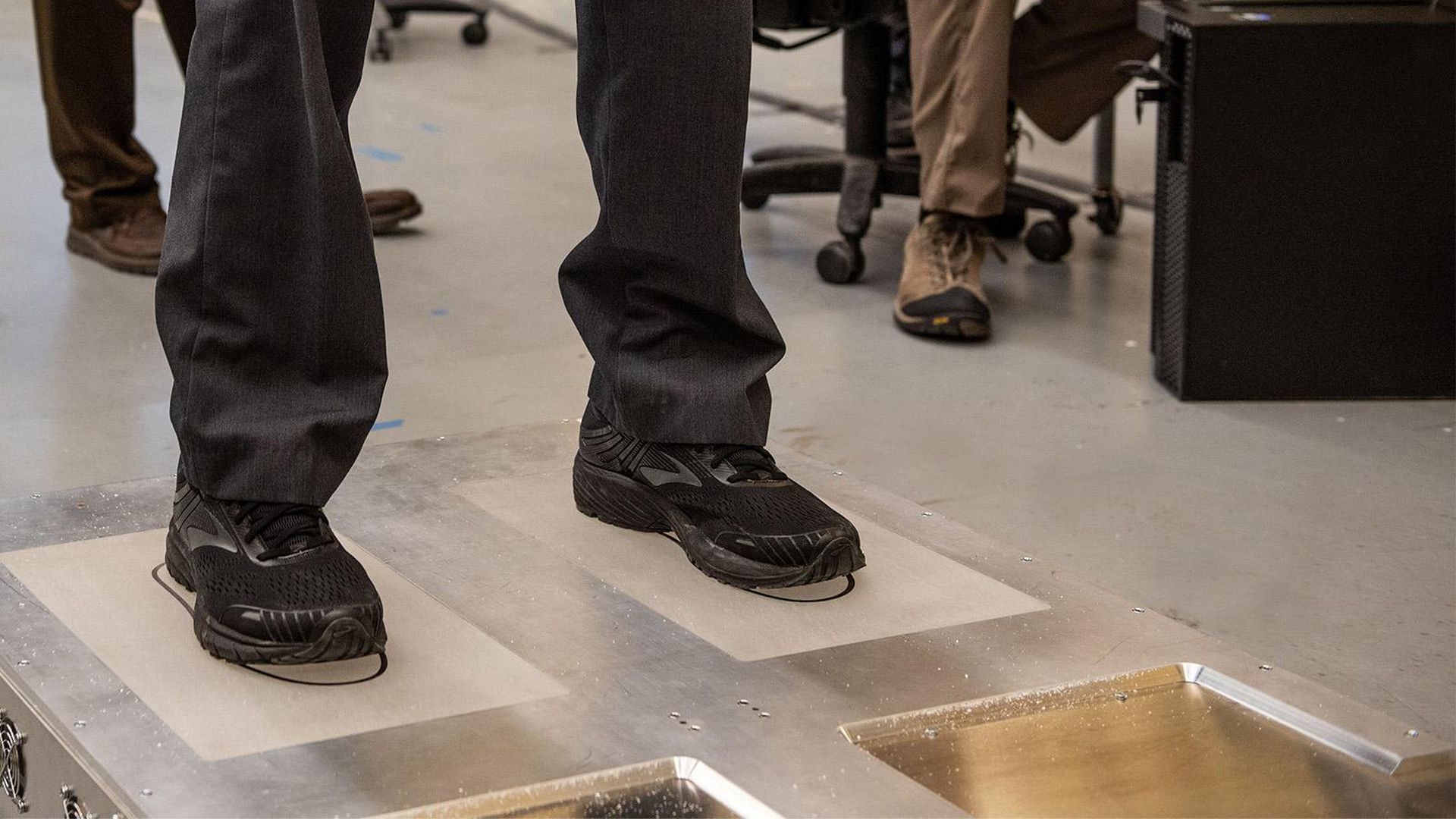| | | | | | | Axios What's Next | | By Bryan Walsh, Joann Muller and Erica Pandey ·Jun 14, 2021 | | Welcome to What's Next, Axios' new newsletter on how work, cities, transportation and more are changing today and tomorrow, coming to your inbox every weekday. - It's written by Joann Muller, Erica Pandey and Bryan Walsh, and edited by Bryan and Scott Rosenberg.
"What was next" trivia: On this day in 1954, what two words were added to the Pledge of Allegiance? 🇺🇸 Today's Smart Brevity count: 893 words ... 3½ minutes. | | | | | | 1 big thing: "Great resignation" wave coming for companies |  | | | Illustration: Annelise Capossela/Axios | | | | Companies that made it through the pandemic in one piece now have a major new problem: More than a quarter of their employees may leave, writes Erica Pandey. What's happening: Workers have had more than a year to reconsider work-life balance or career paths, and as the U.S. opens back up, many of them will give their two weeks' notice and make those changes they've been dreaming about. "The great resignation" is what economists are dubbing it. - Surveys show anywhere from 25% to upward of 40% of workers are thinking about quitting their jobs.
A number of colliding trends are driving the resignation boom, experts say. - University of Michigan economist Betsey Stevenson tells Axios: "People have had a little more space to ask themselves, 'Is this really what I want to be doing?'" So some are deciding they want to work fewer hours or with more flexibility.
- Others are considering switching careers entirely.
- A cruise ship staffer trained and pivoted to work in a data center because the pandemic showed her the volatility of her industry.
- An insurance broker and her restaurant manager husband both left their jobs to start a landscaping company because they realized during the pandemic that they wanted to spend more time outside.
- Some are quitting because their bosses won't let them work from home post-pandemic. Others are leaving because they miss their offices, but their companies are now hybrid or all-remote.
There's not much firms can do to hold onto employees who want to switch fields. But human resources may be able to retain some workers by offering as much flexibility as possible, says Cathy Moy, chief people officer at BDO USA, a financial services company. |     | | | | | | 2. Your guide to what's next |  | | | Illustration: Annelise Capossela/Axios | | | | Technology is rewiring our world, and the pandemic sped it up. Now, as COVID ebbs in the U.S., the next month or next year look as novel and unpredictable as the next decade or century used to be. - Axios What's Next will be your guide to the unfolding future in the workplace and the home, on our streets and in our skies, in downtowns and suburbs.
Cities will be the epicenter of these transformations. - In What's Next, we'll showcase the trends, people and ideas helping U.S. cities large and small adapt to overnight upheavals.
New workplace arrangements are driving this wave of change. - Whether you're a manager, government leader or professional, we'll give you the information you need to pivot your work life through the new normal.
Transportation is the critical connector between cities and people, homes and jobs. - Before the pandemic, we were already in the midst of a once-in-a-century transition to shared, connected, electric and automated mobility — and now that wave of change is cresting.
The future is local. Axios now has a growing network of local newsletters across the U.S. - What's Next will collaborate with them to zoom in for closeups of stories on the ground and observations of the near future unfolding in the wild.
Please invite your friends, co-workers, family to sign up here and join the conversation. |     | | | | | | 3. New screening tech: Shoes on! |  | | | A newly developed shoe scanner builds on the technology used in scanners to detect concealed weapons at airports. Photo: Andrea Starr|Pacific Northwest National Laboratory | | | | The time is coming when you won't have to take your shoes off before passing through airport security, Joann Muller writes. - With newly developed shoe scanning technology — plus enhancements in existing body scanners — passengers will be able to get to their gates faster.
Go deeper (1 min. read The improved screening tech was developed at the Department of Energy's Pacific Northwest National Laboratory, which also developed the body scanning booths now in use at airports worldwide. - PNNL came up with the shoe scanner while working on a high-definition body scanner that can better identify threats while cutting down on false alarms.
- The lab recently licensed both technologies to a security company that plans t0 install them in airports starting in about 18 months.
How it works: Passengers pause for about two seconds on a low platform, where electromagnetic waves generate an image of the bottom of their shoes. - That allows screeners to detect a threatening hidden object.
The bottom line: Adding the shoe scanner could speed up the screening process by 15% to 20%, according to Bill Frain, the CEO of Liberty Defense Holdings, which has the license for the technology. - Eventually, the goal is to screen passengers without stopping as they pass through a tunnel.
|     | | | | | | 4. A dog-bites-mailperson story |  Data: USPS. Map: Danielle Alberti/Axios More than 5,800 postal employees were attacked by dogs last year, and the pandemic was partly to blame, Joann writes from Postal Service data. - E-commerce surged when shoppers were stuck at home, meaning more packages being delivered to residences.
- And more people, including children, were at home to open the door for deliveries, giving pets more opportunities to escape.
- Plus, there were simply more dogs, as "pandemic puppy" adoptions soared last year.
By the numbers: Houston ranked first in dog bites, with 73 carriers attacked. Chicago, Los Angeles, Cleveland and Denver rounded out the top 5 for most aggressive dogs. |     | | | | | | 5. 🤖 What they're saying | | Only humans are dumb enough to think they can drive in all conditions — robots are smarter than that. — Reilly Brennan, Trucks Venture Capital managing partner, speaking to Axios' Kia Kokalitcheva about why he believes we'll never have fully self-driving cars. |     | | | | Thanks for reading! If this email was forwarded to you, subscribe here! |  | | The tool and templates you need for more engaging team updates. | | | | | | Axios thanks our partners for supporting our newsletters. If you're interested in advertising, learn more here.
Sponsorship has no influence on editorial content. Axios, 3100 Clarendon Blvd, Suite 1300, Arlington VA 22201 | | | You received this email because you signed up for newsletters from Axios.
Change your preferences or unsubscribe here. | | | Was this email forwarded to you?
Sign up now to get Axios in your inbox. | | | | Follow Axios on social media:    | | | | | |








No comments:
Post a Comment